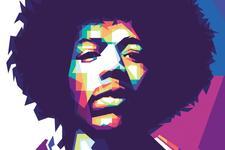How NFTs are disrupting music copyright protection
NFTs are currently a hot topic in the digital art world, but what impact are they having on copyright protection for artists in the music industry?

The first Non-Fungible Token (NFT) is thought to have been created back in 2014 and they have since rapidly caught the attention of the public.
A popular way to buy and sell digital art, NFTs are also raising novel questions for copyright in the music industry.
What are NFTs?
It can be helpful to start by defining the opposite of NFTs – fungible tokens. Like physical currency or a cryptocurrency like Bitcoin, fungible tokens have equivalent values to one another and can be exchanged.
For example, ten £1 coins is the equivalent of one £10 note. Each non-fungible token or NFT on the other hand, has a unique identifying code that makes it impossible for NFTs to be exchanged or traded one-for-one.
This makes them akin to a collector’s item like rare trading cards or a limited edition vinyl album, except the buyer receives the asset in the form of a digital file.
Typically, NFTs have been created to sell digital collectables like art, music, in-game items, videos and even Tweets, with Twitter co-founder Jack Dorsey selling his first ever tweet as an NFT for more than $2.9 million in 2021.
In the music industry, Kings of Leon became the first major band to release an album as an NFT in 2019 and buyers of ‘When You See Yourself’ got to download the record, exclusive moving artwork and got access to limited edition vinyl.
Essentially, an NFT can be created from any content that can be digitised.
A blessing or a curse for the music industry?

Crucially for artists, NFTs represent a new source of revenue, which is especially important as the growth of streaming platforms has led to a reduction in artists’ income alongside limited touring opportunities due to the Covid pandemic.
Artists can also connect with their fan base by sharing additional content and build excitement around new releases with NFTs because of their rarity.
It could also be a means of providing opportunities for new or independent artists without a record label to sell directly to their fans and access a greater share of income.
With music NFTs, provided musicians have the required technical knowledge, minting music on an NFT platform makes it relatively easy to sell direct to fans.
However, there are growing concerns about the ease of copyright infringement with NFTs and the need to protect artists’ interests in maintaining the exclusive rights to their work.
Copyright protection gives artists the exclusive right to create, sell and distribute their work, including creating NFTs which are often derivative works.
So in theory, artists can sell music NFTs to anyone while still retaining control over the work and its content, much like selling physical copies or making songs available on streaming platforms.
However, anyone can create or “mint” a digital file as an NFT, regardless of whether they have rights to the underlying work.
This has led to NFTs being created and sold without artist permission, often for large sums. The creation of an NFT and its unique identifying code is also based on blockchain, meaning creators can remain anonymous.
Mechanisms for action
The anonymity factor makes it extremely difficult to detect and enforce copyright rights against infringers,
which would usually require knowledge of a name and address of the potential infringer.

Buyers are also at risk of paying large sums for a ‘counterfeit’ NFT that is promoted as being connected to the owner of the copyright in the original work but is not authorised.
Given a lack of awareness of copyright issues, many buyers may also be led to believe that purchasing an NFT gives rights to the underlying work when the NFT is simply a digital asset and copyright may still prohibit the making of further copies or modifications to the work.
One means of addressing this would be to tighten up regulation of NFT marketplaces and platforms, like introducing an independent regulator or having a standardised takedown process for copyright owners to flag copyright infringements and have unauthorised NFTs taken down.
There is also currently no verification or certification process on popular marketplaces like OpenSea and Rarible, by which someone uploading an NFT would need to prove ownership of the underlying copyright.
One solution could be to have a portal for creators on NFT platforms, like the Amazon Brand Registry, whereby could register creations and potentially be alerted to infringing NFTs.
We may also see more third party monitoring services specifically focused on NFT sharing platforms, like the monitoring of online e-commerce platforms for counterfeit products.
NFTs may be seen as a way to increase artist revenue and as they are usually accompanied by bonus content and exclusivity factor, they’re equally appealing to fans.
Perhaps in the future we’ll see music releases as NFTs no different to uploading songs to Spotify or SoundCloud, but greater copyright enforcement mechanisms may be needed for the benefit of both artists and copyright owners, as well as NFT buyers at risk of spending large amounts on copyright NFTs.


